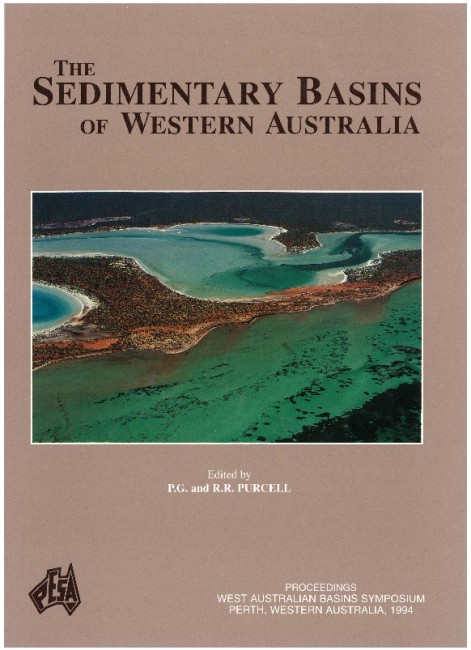Publication Name: The Sedimentary Basins of WA
Authors: P.A. Symonds, C.D.N. Collins and J. Bradshaw
Publication Volume: 1
Date Published: July 1994
Number of Pages: 28
Reference Type: Book Section
Abstract:
In mid-1993, the Australian Geological Survey Organisation (AGSO), acquired about 3400 km of deep-seismic data (16 s record length) on a regional grid of lines over the Browse Basin off northwestern Australia. These data are linked to similar AGSO data sets that extend throughout the North West Shelf. Interpretation of four key lines across the basin shows the relationships between the major structural elements, and highlights regional variations in structural style, basin fill and tectonic development.The primary architecture of the Browse Basin is largely the result of northeast-southwest, ?Late Devonian-Early Carboniferous intracratonic, upper crustal extension, and northwest to north-oriented midCarboniferous- Early Permian full-lithosphere extension. These extension events, which inherited older structural lineaments from the Precambrian Kimberley Block, created many of the fundamental structures that controlled the later development of the basin, and influenced the nature and distribution of its up to 11 km of sediment fill. During extension, the crust beneath the Browse Basin was thinned from 35 km to 10 km by removal and stretching of both upper and lower crust, leaving the mid-crust largely intact.
Later basin-deformation events in the Late PermianEarly Triassic (Bedout Movement), Middle-Late Triassic, and Late Triassic-Early Jurassic (Fitzroy Movement) reactivated and modified the fundamental extensional architecture, and inverted the basin fill. These events, in conjunction with the post-breakup (CallovianOxfordian)
margin sag, controlled the nature and


